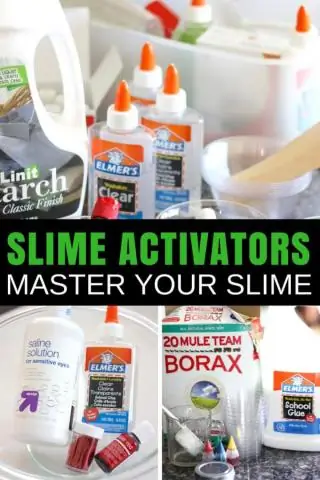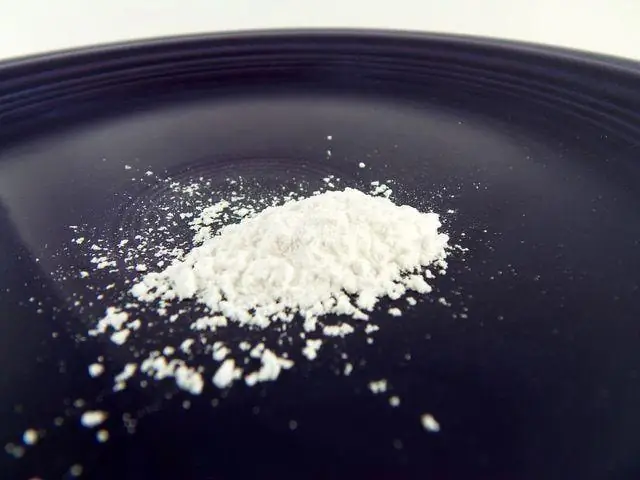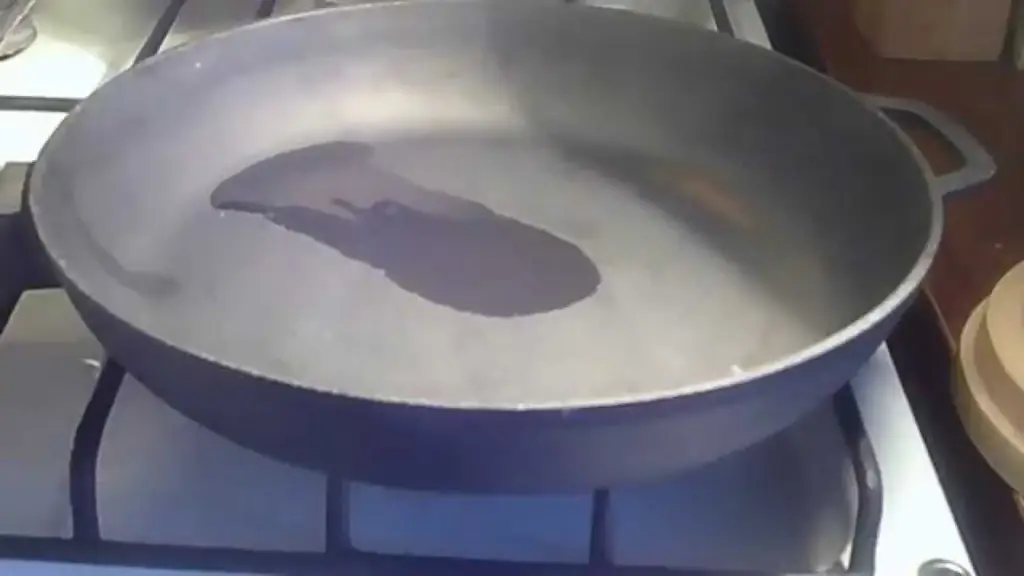
Table of contents:
- How to scrub foam from a door: effective methods for various materials
- How quickly polyurethane foam hardens
- What can be removed
- How to clean varnished wood and MDF
- How to wipe off dried foam from eco-veneer
- How to remove foam residues from a metal door
- Cleaning glass and decorative inserts of interior doors
- Author Bailey Albertson [email protected].
- Public 2023-12-17 12:53.
- Last modified 2025-01-23 12:41.
How to scrub foam from a door: effective methods for various materials

Polyurethane foam is used when installing doors. It possesses high sealing properties and good adhesion. In the process of blowing foam into the space between the walls and the box, it often hits the door, which spoils the appearance of the canvas. It is advisable to wipe off contamination as soon as possible from metal, wood and other surfaces. Therefore, it is important to understand how to remove the polyurethane foam.
Content
- 1 How quickly polyurethane foam hardens
-
2 What can be removed
- 2.1 User reviews about Cosmofen cleaner
- 2.2 Effective foam removers
- 2.3 Video: an overview of professional cleaners
-
3 How to clean varnished wood and MDF
3.1 Video: master class on removing foam with Dimexidum
-
4 How to wipe off dried foam from eco-veneer
4.1 How to clean polyurethane foam with white spirit - video
- 5 How to remove foam residues from a metal door
-
6 Cleaning glass and decorative inserts of interior doors
-
6.1 Using Soudal PU REMOVER Paste
6.1.1 Feedback on the use of Soudal PU REMOVER
-
How quickly polyurethane foam hardens
Polyurethane foam is a high-adhesion sealant made on the basis of polyurethane foam. This material hardens in 7-12 hours. It is almost impossible to dissolve the hardened polyurethane foam. And fresh sealant is easier to remove, since such material is more susceptible to attack. Therefore, it is advisable to start cleaning immediately after the foam hits the door leaf:
- You will need a knife or spatula to work. First, use a tool to remove the foam from the surface. Proceed as carefully as possible to avoid damaging the surfaces.
- This will leave a small amount of sealant on the door. It can be removed with acetone, car paint thinner, nail polish remover, or white spirit. It is necessary to moisten a rag or napkin and wipe the contaminated surface until completely clean.
What can be removed
If the door has plastic or vinyl elements, you should not use acetone. It is recommended to clean such materials with COSMOFEN 10, which is suitable for removing both fresh and hardened foam, as it can soften hardened material. The cleaner is applied to a napkin, after which the surface is wiped until the residues disappear completely.

Polyurethane foam is a popular insulating agent used in finishing works
User reviews of the Cosmofen cleaner

Cosmofen is a delicate cleaner suitable for vinyl and plastics
Effective foam removers
Removal of frozen foam begins with mechanical cleaning. But when choosing a tool, you need to take into account the material from which the door is made:
- For wood, varnished or iron surfaces, a blade, sharpened trowel or knife will work.
- It is best to clean the veneer with a glass ceramic scraper or a wooden spatula.
Then they begin to remove traces. Of course, for this purpose, you can buy a specialized product that is sold in every building market. To remove fresh foam, use PENOSIL Foam Cleaner, Oppa, Waller or Ultima Professional. And if the composition has already hardened, PENOSIL Premium Cured PU-Foam Remover will help remove its residues. These products are sold in cylinders, like the polyurethane foam itself. They are usually used to clean the gun, but can be used on other surfaces as well. To do this, apply a solvent to the remains of the polyurethane foam and remove it with a clean cloth after 10-15 minutes.

For each type of material, a specific method of foam removal must be selected
Video: an overview of professional cleaners
These cleaners contain acetone and the paint on the door leaf can come off together with the foam residues. Consider safer and equally effective methods of removing unwanted traces.
How to clean varnished wood and MDF
It is more convenient to remove foam from a varnished door at that stage of solidification, when it resembles rubber. In this case, it is enough to pull on the edge and the dirt will lag behind the surface. If the desired result is not achieved, you need to use a cleaner. For this purpose, Dimexide is suitable, which can be purchased at the pharmacy. This agent destroys the binding molecules of the sealant.
Do not use hard sponges or other abrasive materials to clean wood and MDF panels. If you need to wipe off the foam from the polished surface, Dimexide is also used. The process of cleaning doors with this tool is simple:
- Carefully cut off the remaining foam with a knife as much as possible without damaging the surface.
- Moisten a cloth or sponge with Dimexidum and treat stains for 1 - 2 minutes.
- When the sealant is soft, wipe it off with a sponge, a piece of hard cloth or a toothbrush.

Dimexide will quickly and safely remove foam residues from varnished and wooden doors
Video: master class on removing foam with Dimexid
How to wipe off dried foam from eco-veneer
Eco-veneer is a multilayer material obtained from compressed wood fibers and a synthetic binder. It imitates the texture, pattern and color of natural wood, has a smooth surface. Dimexide is not used in the case of doors made of such material, since it is absorbed and destroys the structure of the fibers. You can clean a veneered door as follows:
- First, clean the foam mechanically - using a knife, spatula, or another convenient tool.
- Then wipe the surfaces with a damp sponge, then treat with soda.
As an alternative, it is allowed to remove clots of polyurethane foam with white spirit. To do this, apply the product to the desired place and leave for 30 seconds. After that the veneered fabric is cleaned with a dry soft cloth. A prerequisite is preliminary testing of the tool on a small fragment of the canvas.
How to clean polyurethane foam with white spirit - video
How to remove foam residues from a metal door
You can wash the mounting foam from a metal door using Cosmofen, Macroflex or Dimexide solvents. The funds are applied to the foam clots for 15 minutes, after which the remaining material is removed using napkins.

Metal doors are cleaned from polyurethane foam with chemical compounds
Cleaning glass and decorative inserts of interior doors
Interior doors are often made with clear or frosted glass inserts. Undoubtedly, this decorates the appearance of the product, but accidentally falling spray of polyurethane foam significantly spoils the impression. Remaining funds must be removed as soon as possible. For these types of surfaces, the oil method is suitable. Actions are as follows:
- Use a knife to cut off the top of the foam.
- After that, vegetable oil is applied on top for 15 minutes, which also has the ability to soften the sealant.
- Then the contaminated area should be rubbed with a kitchen sponge. When the foam is completely removed, the oil residue is removed with a soap solution.
Using Soudal PU REMOVER Paste
Long-frozen foam is removed from glass and other non-porous surfaces with Soudal PU REMOVER paste. This product is a mixture of solvents and plasticizers. The paste leaves no residue and is odorless. It is applied with the supplied brush. After 20 minutes, the foam is removed with a spatula.
Feedback on the use of Soudal PU REMOVER

Soudal PU REMOVER cleans cured foam well from non-porous surfaces
Often, when working with polyurethane foam, it is not possible to avoid contamination of the door leaf. Despite the strong adhesion of this product to the surface, there are ways to clean the surfaces.
Recommended:
How And How To Wash Polyurethane Foam From Hands, Face And Other Parts Of The Body, As Well As Remove It From Hair + Photos And Videos

Commonly used polyurethane foam is difficult to remove. How to wash it from hands, nails, face and body skin, as well as from hair?
How To Make A Slime At Home With Your Own Hands - Without Sodium Tetraborate And Glue, From Hand Cream, Shaving Foam And Other Ingredients, Recipes With Photos And Videos

Is it possible to make a slime at home. Types of slimes and recipes for their manufacture, depending on the desired properties. Toy care features
How To Make A Font For A Bath With Your Own Hands, Wooden And From Other Materials - Step-by-step Instructions With Photos, Videos, Dimensions And Drawings

Why do you need a hot tub, its design. Types of fonts. How to make a font with your own hands: step by step instructions. Photo and video
How To Replace Baking Powder For Dough In Baking: Slaked Soda And Other Options For Cake, Biscuit And Other Products + Photos And Videos

How to make lush baking can be done without baking powder at home. What to replace. Useful Tips
How To Ignite A Cast Iron Pan Before The First Use And In Other Cases: Salt, Oil And Other Methods + Photos And Videos

How to ignite cast iron pans. Quick ways to get rid of engine oil residues, rust and carbon deposits
